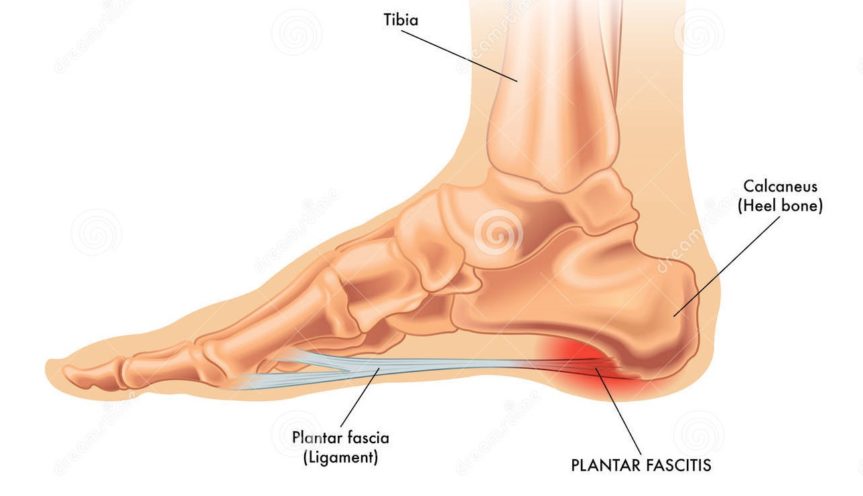
Nagging Heel Pain? What is Plantar Fasciitis? And How to Fix it
- When you wake up in the morning, do you experience a sharp pain in the heel of your foot?
- Does the pain radiate down into the arch of your foot?
- Do you feel better when you put on shoes?
- Does the pain get better as the day goes on?
- Does standing for long hours increase your pain?
If any of this sounds familiar, then odds are you may be suffering from Plantar Fasciitis
What is Planter Fasciitis?
Plantar fasciitis is an inflammation to the band of tissue (plantar fascia) that extends from the heel to the toes. The tissue becomes overly tight causing inflammation and irritation, often towards the medial aspect of the heel.
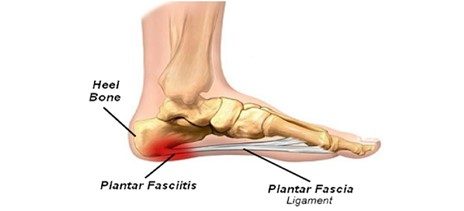
Why does Plantar Fasciitis Develop?
There are a few reasons as to why an individual can develop plantar fasciitis:
- Flat or High Arches. The purpose of the plantar fascia is to support your arches and provide shock absorption each time you take a step. If your arches are not supported, then this leads to higher levels of stress to the plantar fascia.
- Weak Glutes. The strength of your glutes play an important role in the position of your foot each time you take a step. If your glutes are not strong enough to externally rotate your hip, then that can cause your lower leg to rotate inwards, causing your arch to collapse or flatten placing more stress on your plantar fascia.
- Tight Calf Muscles. Tightness in your gastrocnemius and soleus muscle, as well as your achillies tendon can apply higher levels of stress to your plantar fascia. This is often due to overuse and lack of recovery in the form of stretching and rest.
- Weak Foot Muscles. The smaller intrinsic muscles of your feet play an important role in helping to provide stability to your arches. When these muscles are weak your arches have a harder time to support and act as shock absorbers with weight bearing activities. This places increased tension to the plantar fascia
Possible Treatment Options
1, Stretching: Having a daily practice of stretching out your calves and plantar fascia may help in decreasing symptoms.
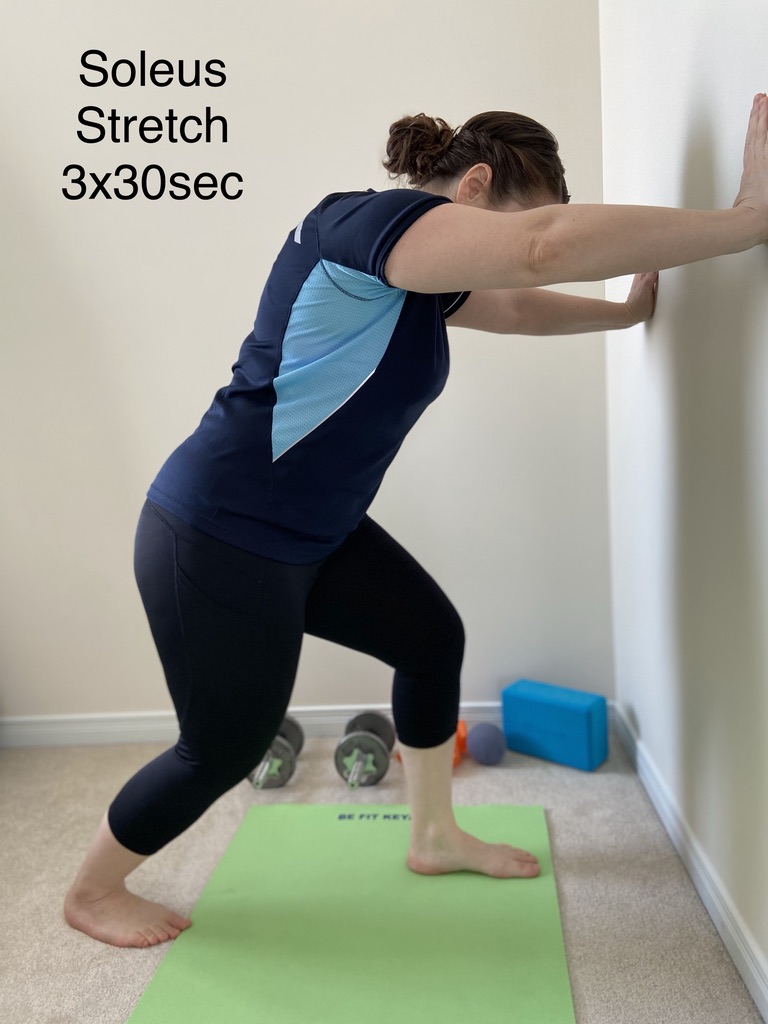
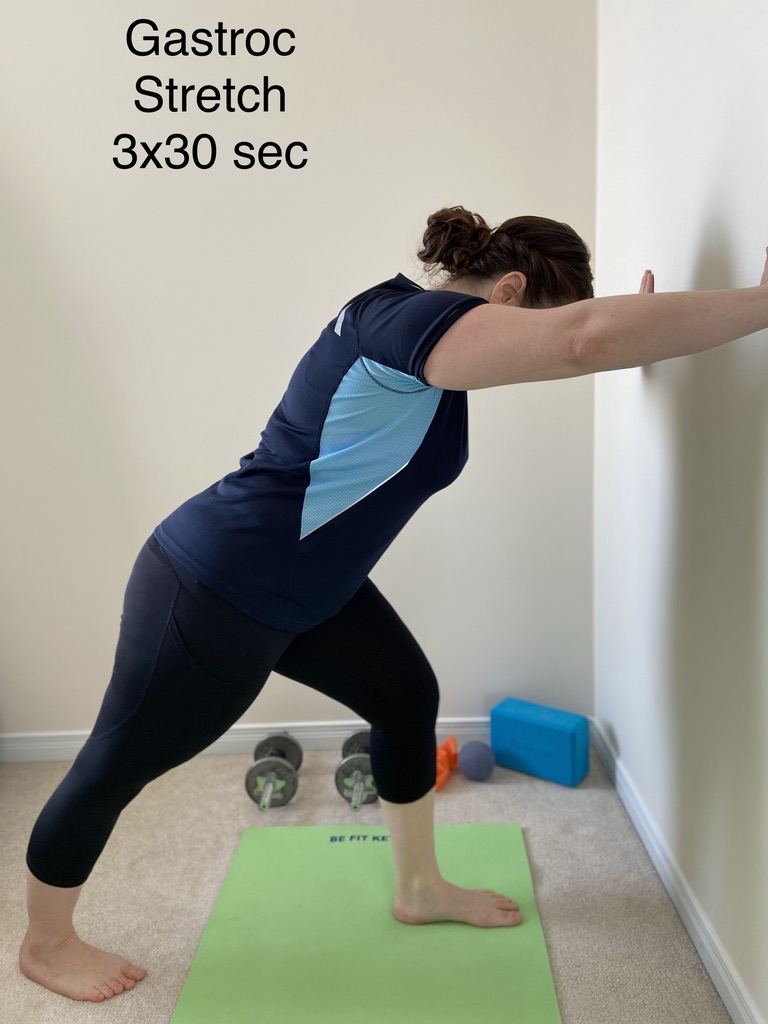
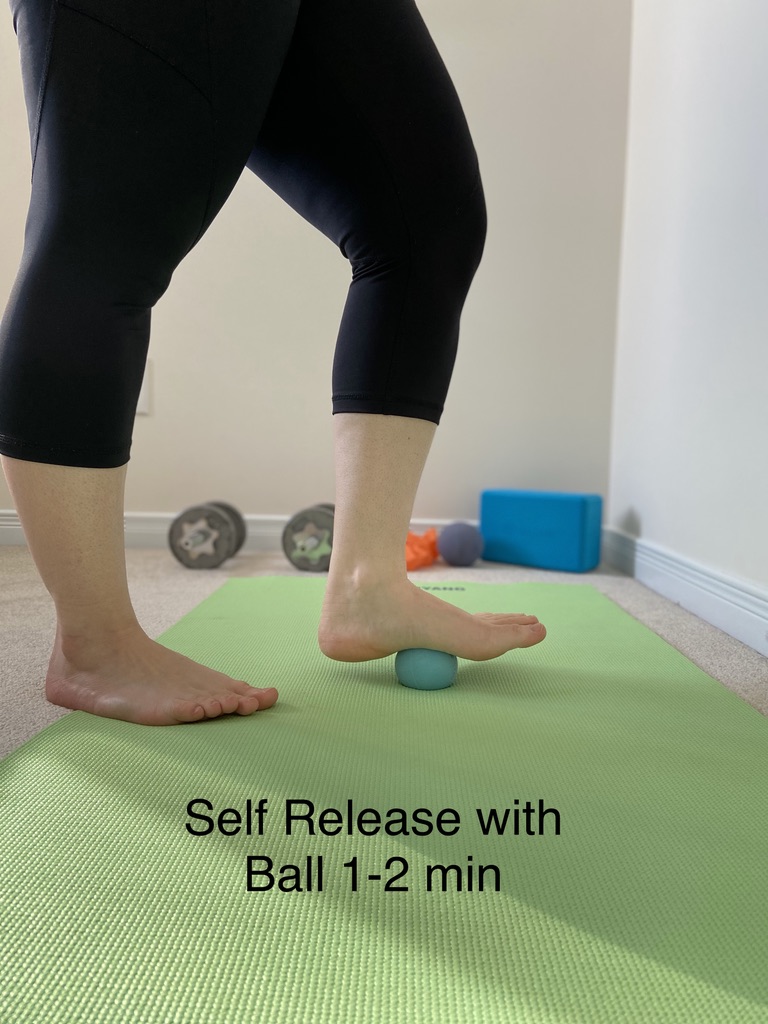
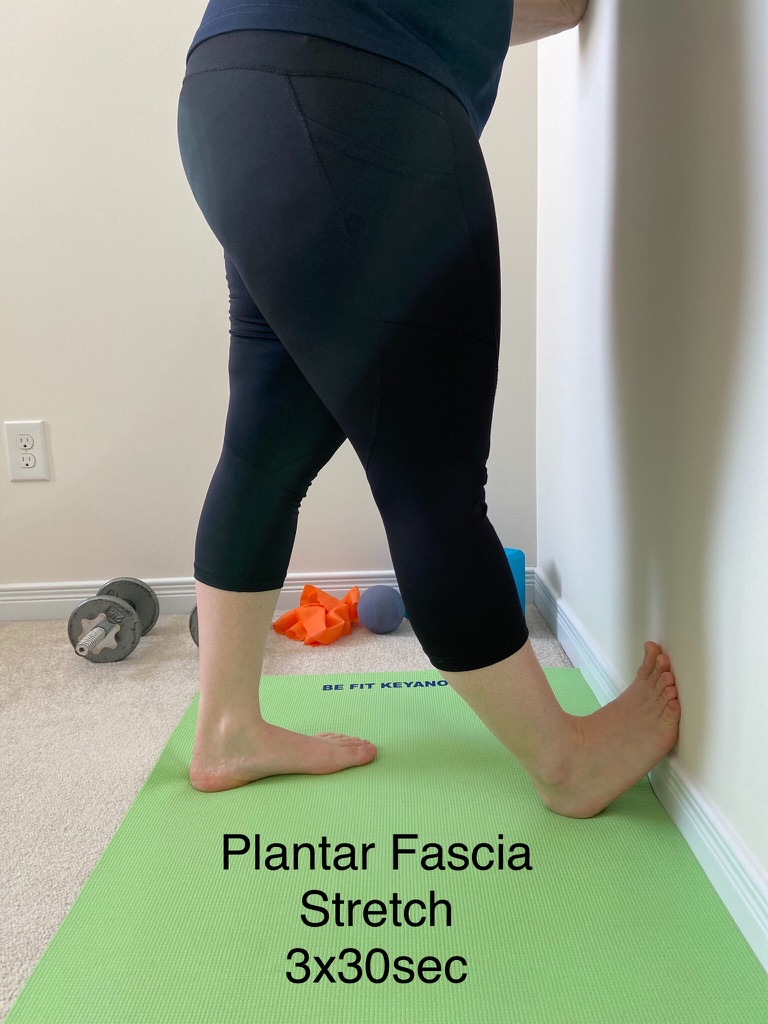
2. Glute and Foot Strengthening: By strengthening these two areas you are helping to provide the necessary stability needed to maintain proper alignment and mechanics with activity.
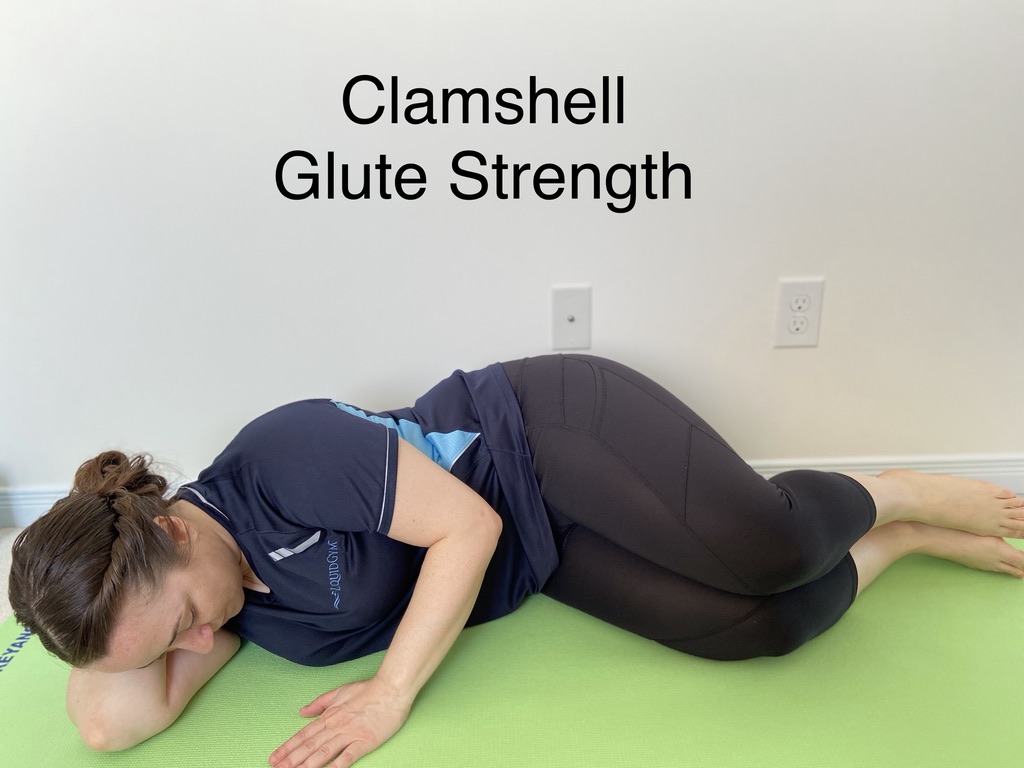
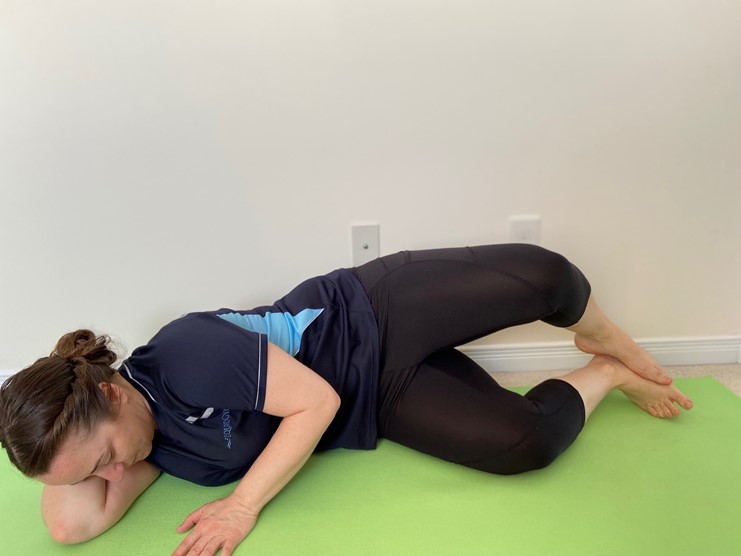
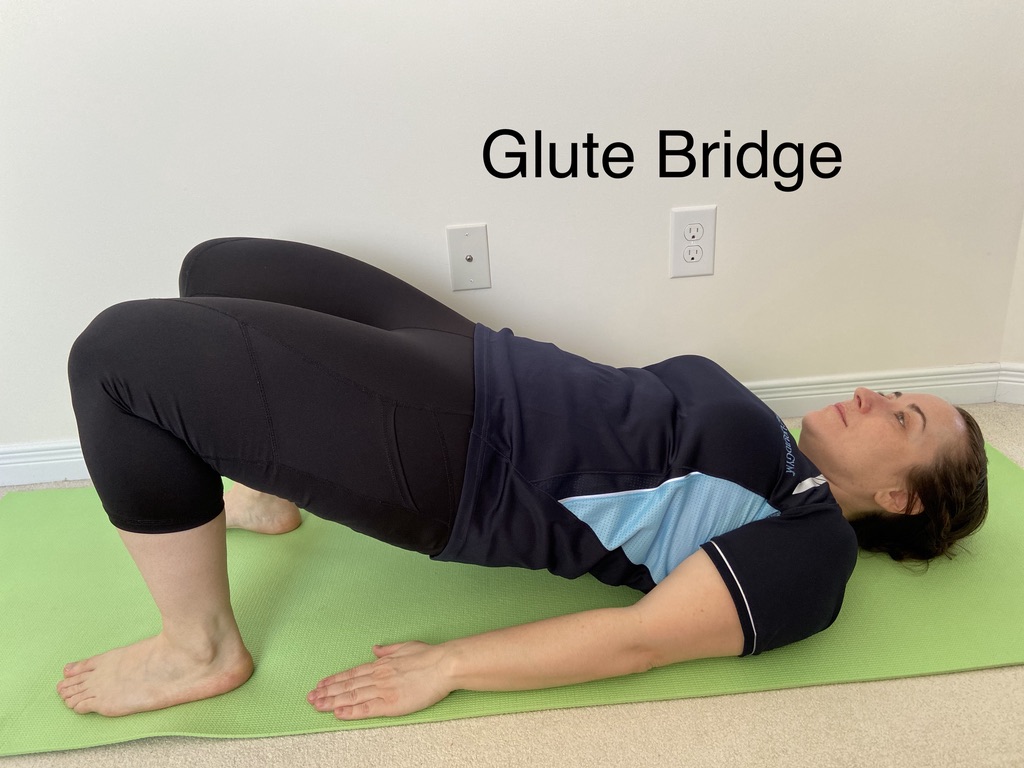
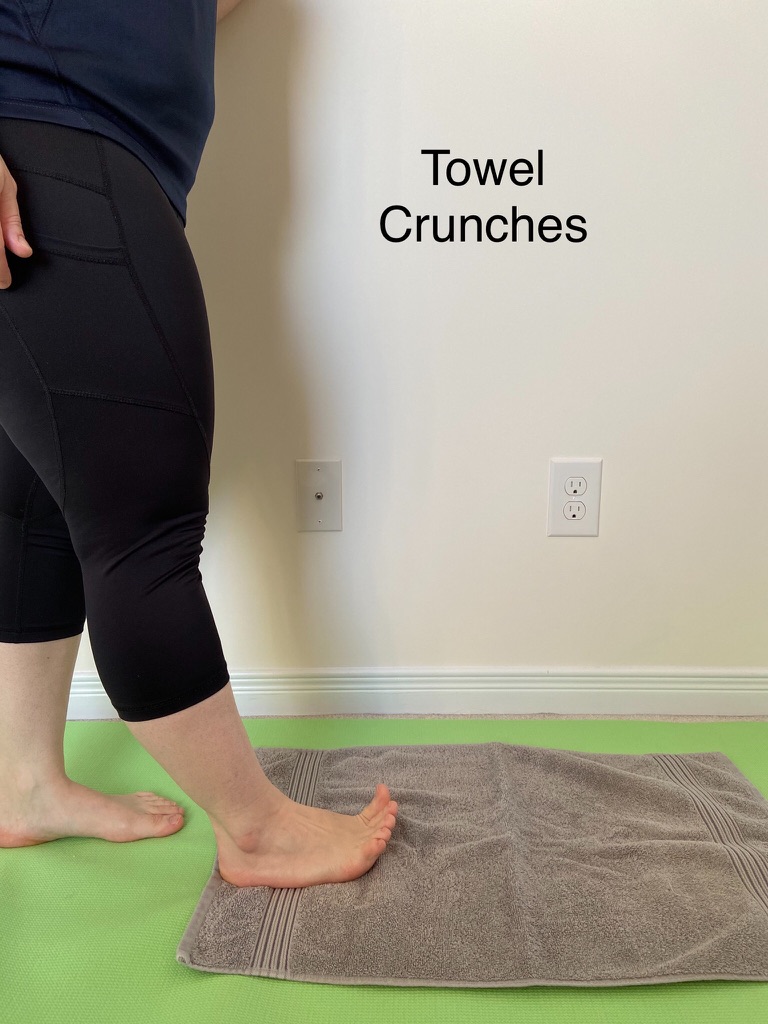
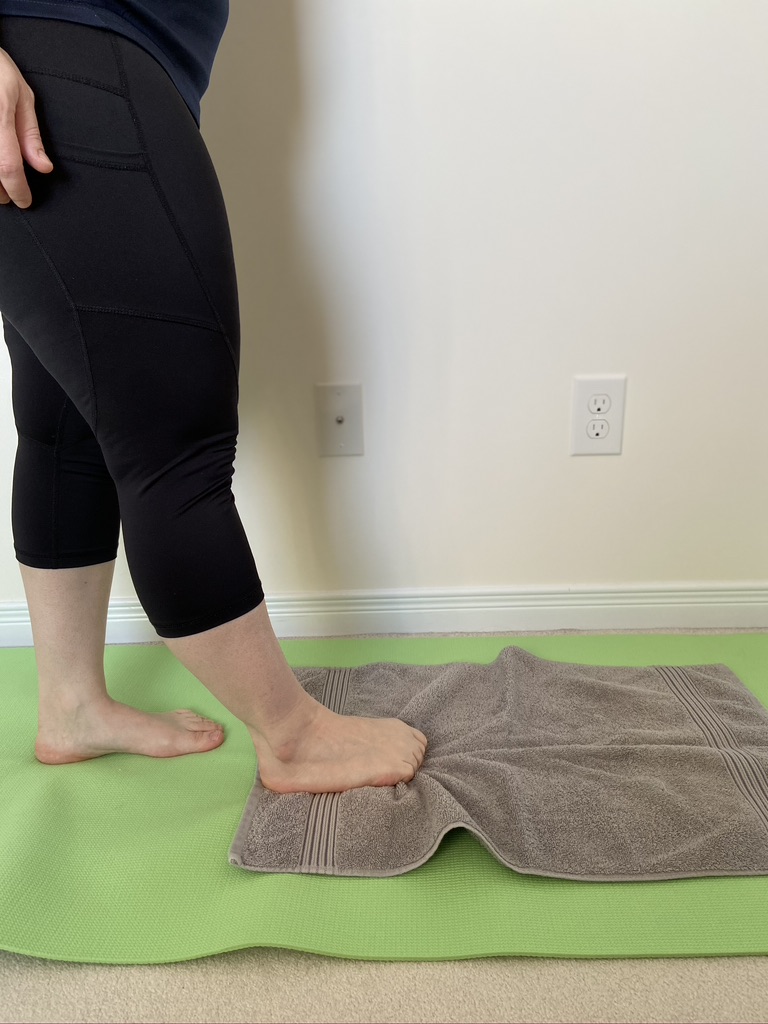
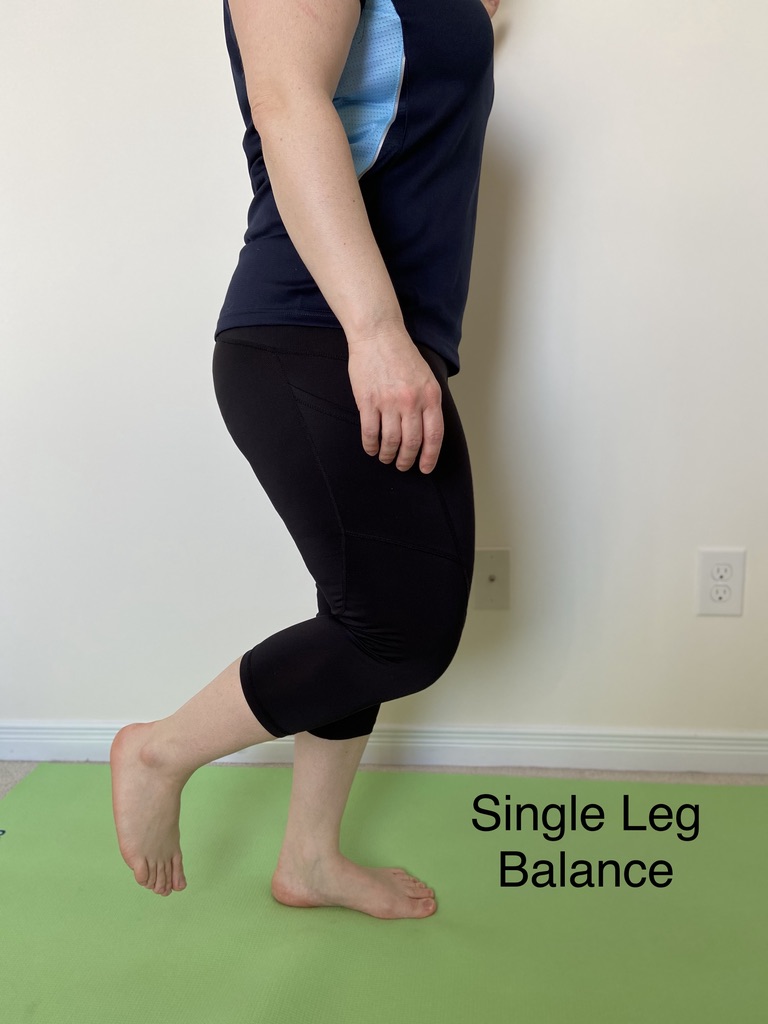
3. Strassberg Sock: is a form of night splint that helps hold the plantar fascia in a position of stretch throughout the night
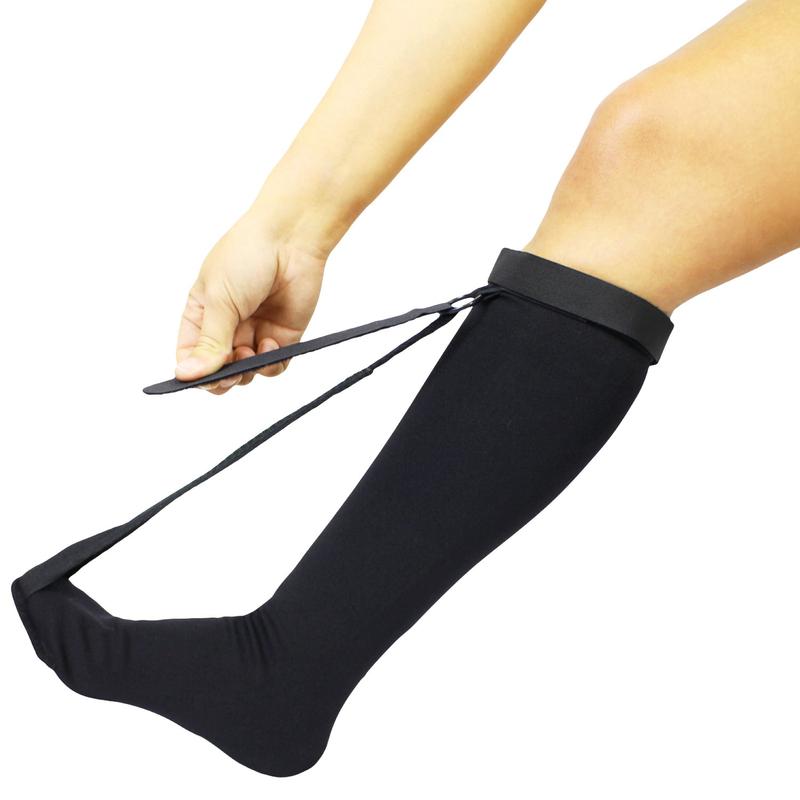
4, Supportive Footwear: Finding the right footwear that provides both support and comfort is important. You want to look for something that has a thicker well cushioned midsole as well as longitudinal arch support that provides motion control to the foot. Each foot is different, so it is important to try on a few styles to make sure that it is the right fit for you.
5. Rest: It is important to give the proper amount of rest to the area to help decrease inflammation and pain. Try to adjust your activities of daily living to sitting whenever you can.
6. Orthotics: Additional support for the foot in the form of orthotics may be required if there is a structural or functional weakness to your arches. An assessment from a health care practitioner will help in deciding if orthotics are for you.
If you are unsure if orthotics will actually help, there is an easy tape job that you can do at home that will mimic orthotic support. If you find relief from this tape job, then orthotics may be a possible solution.
You will need a roll of Kinesio-Tape, which is an elastic adhesive tape that can be bought at most pharmacies.
Step 1: Sitting with your foot resting on your opposite thigh (legs crossed), measure and cut the tape from the heel of your foot to the starting point of the ball of your foot. (metatarsal heads)
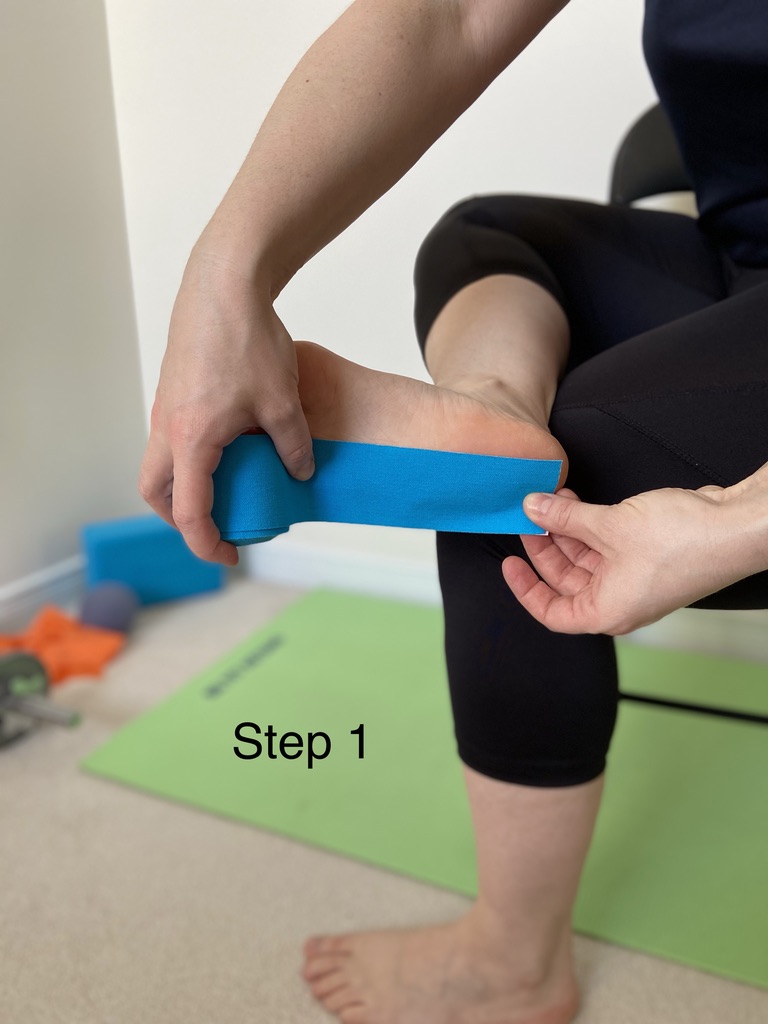
Step 2: Measure and cut 2 other small pieces measuring the width of your metatarsal heads
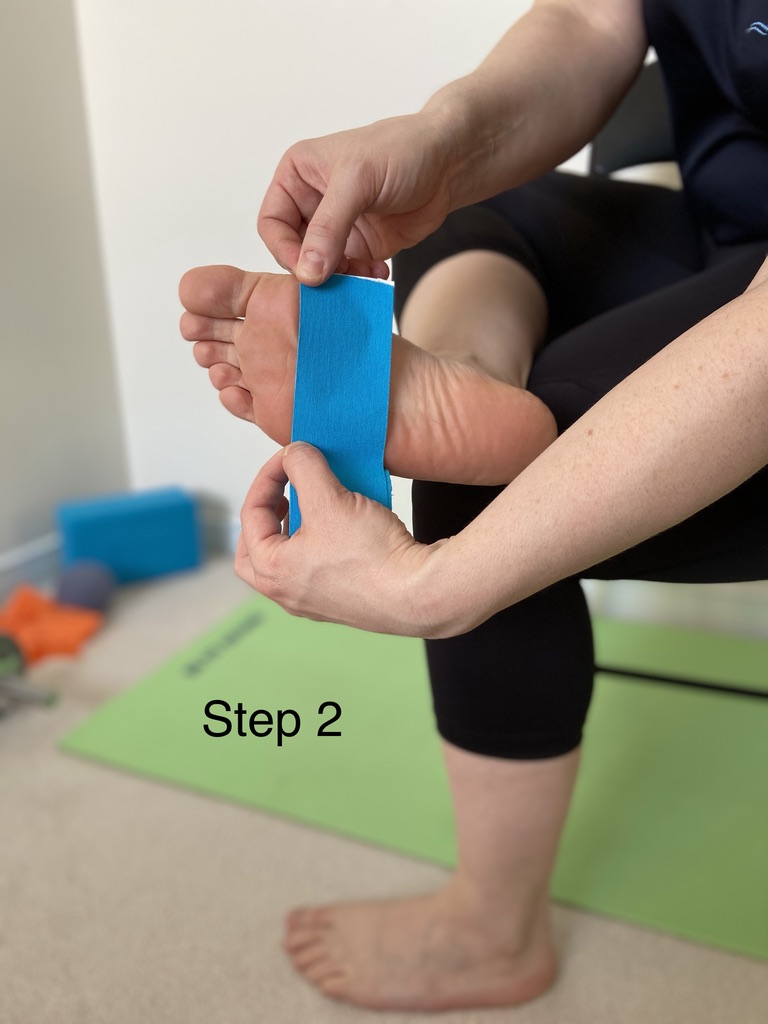
Step 3: Pull the backing off the long piece of tape and anchor one end on the heel of your foot. Pull about 20% of the stretch out of the tape and lay the tape down finishing just below your toes. Smooth the tape down warming the adhesive to the skin
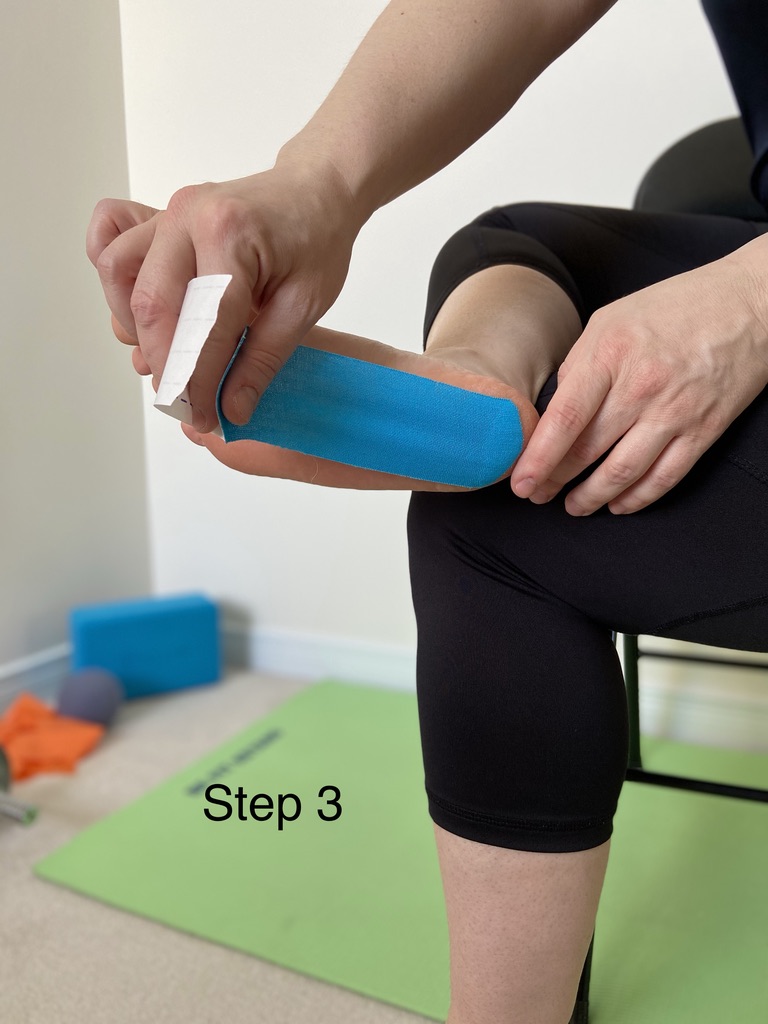
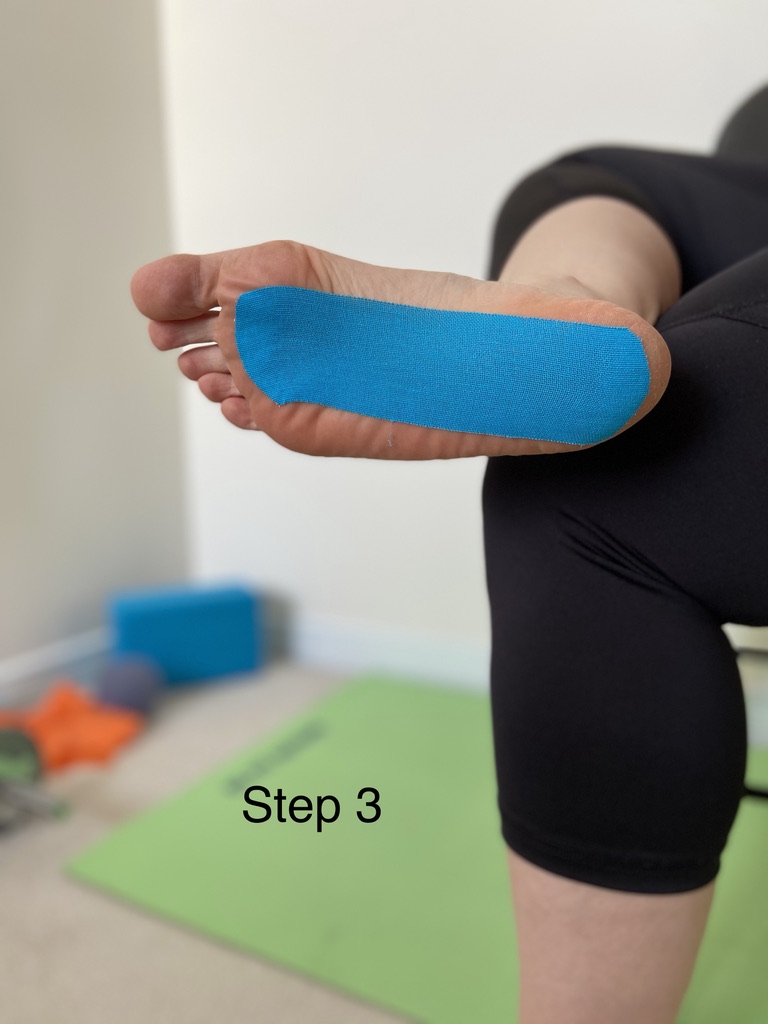
Step 4: Take one of the smaller pieces and pull 100% of the stretch out of the tape and place across the ball of your foot to anchor down tape
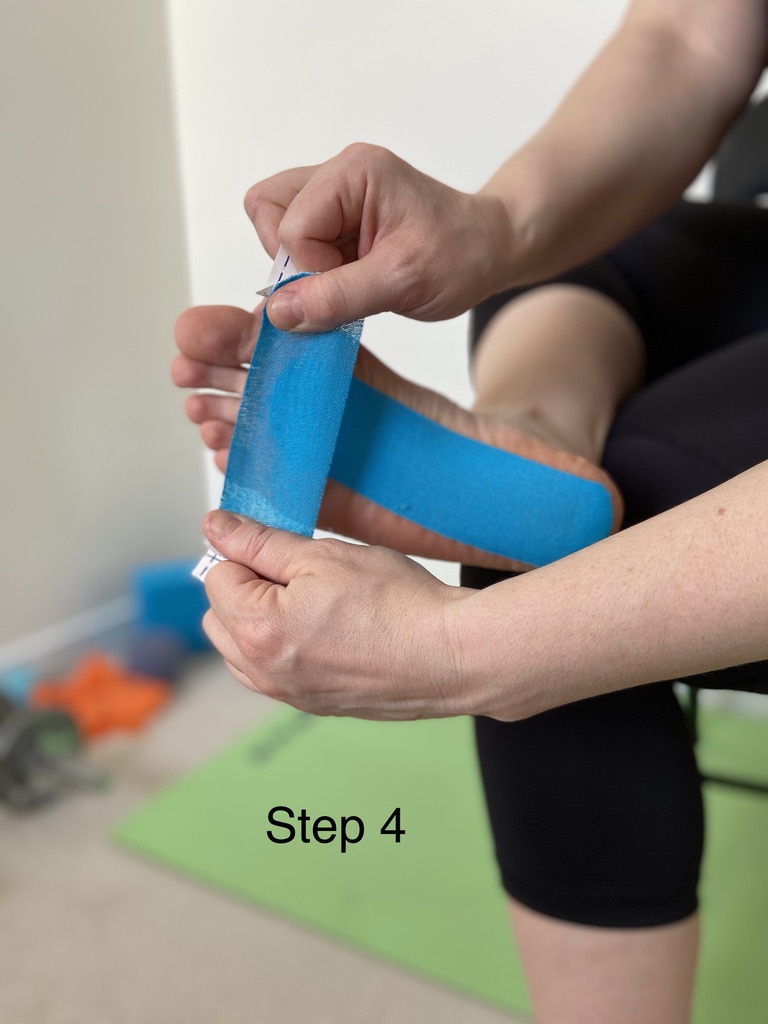
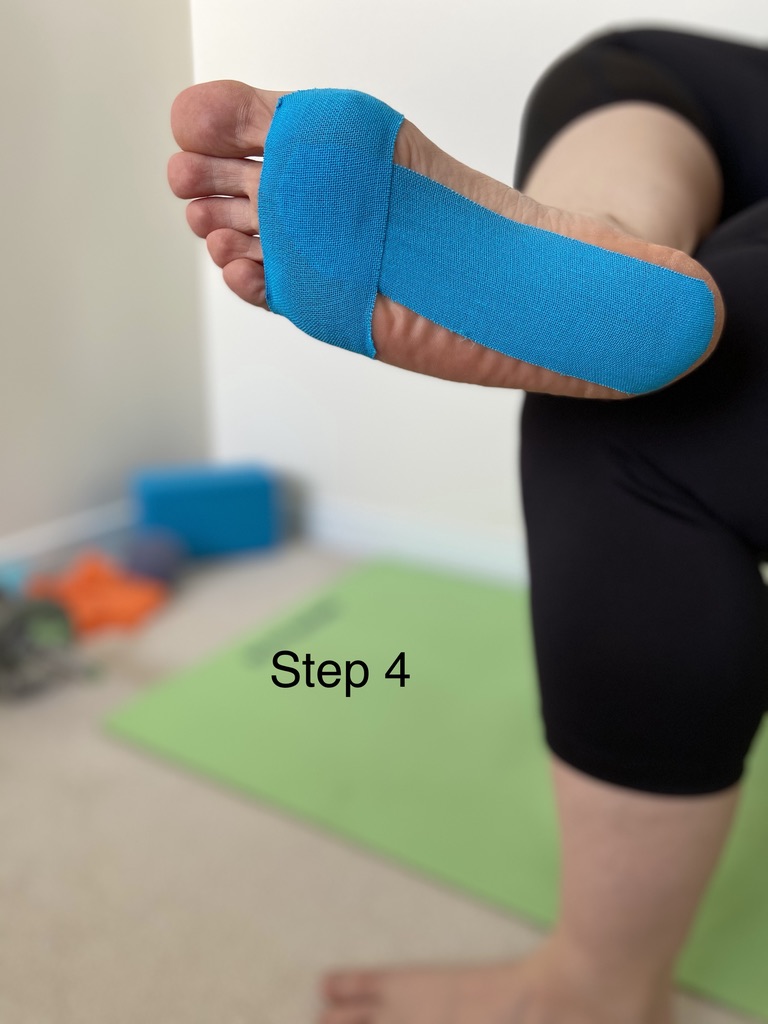
Step 5: Take the second small piece of tape and place one end on the outside of your foot just below your heel. Take 100% of the stretch out of the tape and pull across the bottom of your foot pulling up on the tape and finishing on the inside of your foot
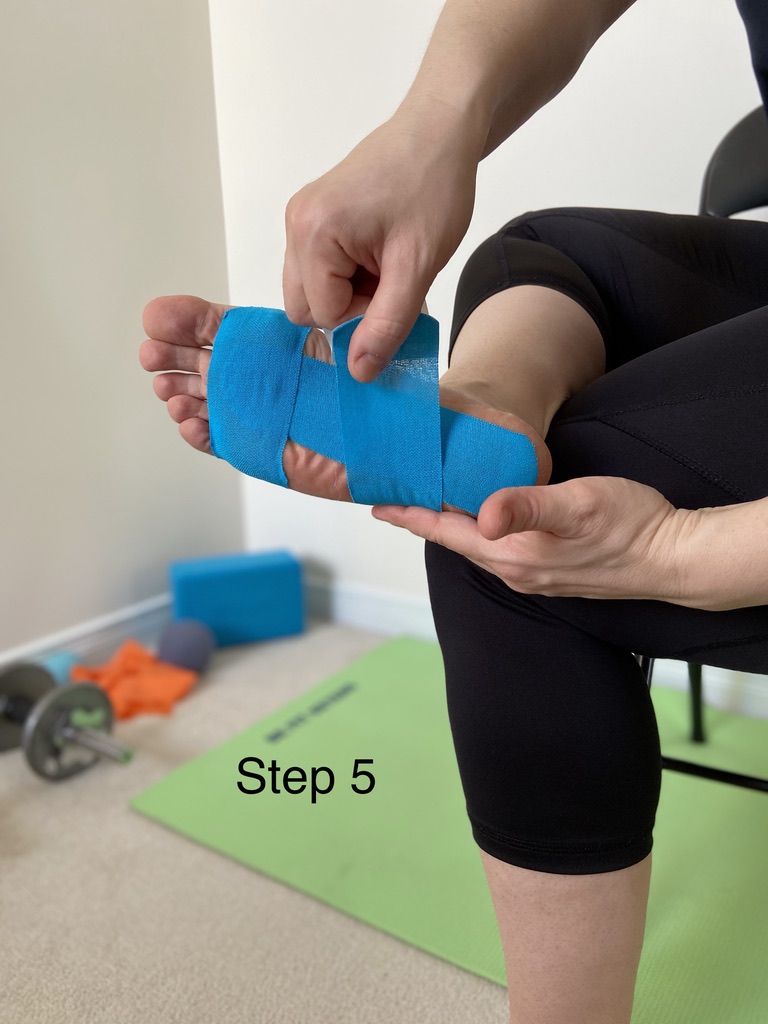
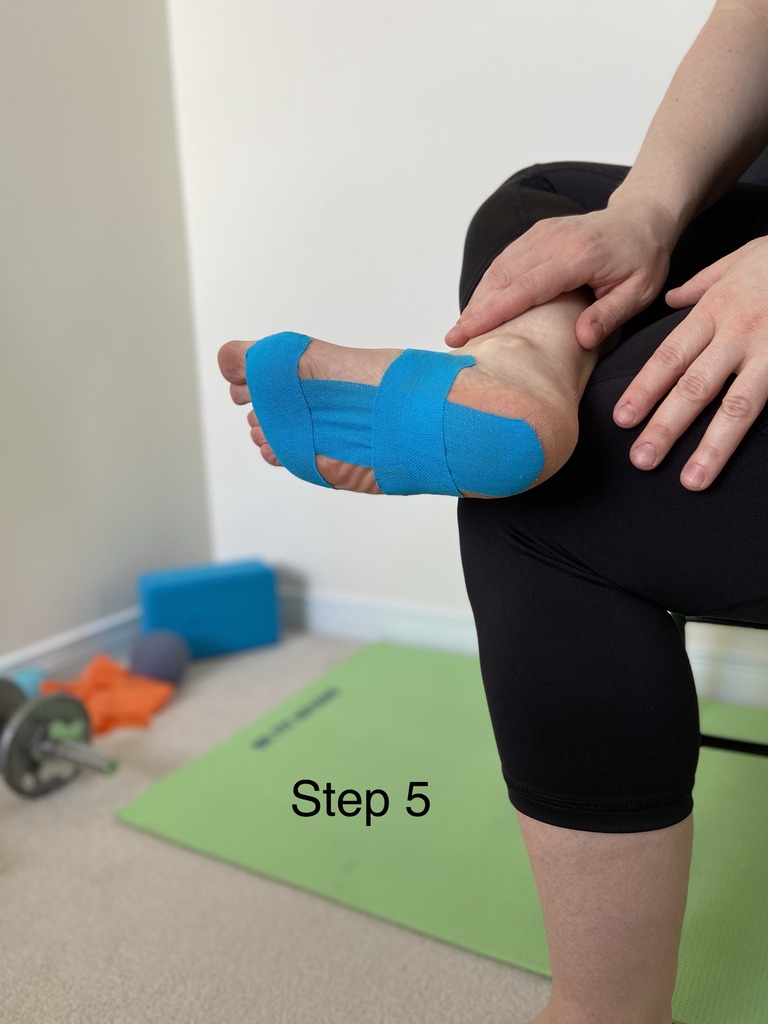
Step 6: Stand up and take a few steps to ensure comfort. You should feel like the tape is hugging and lifting your arch
Video on Plantar Fasiciitis Taping https://youtu.be/1eDGioKHCf4
This tape is waterproof, so it may be worn for a few days if no irritation occurs. If irritation does occur, remove tape and wash foot. Be careful when putting socks on and off as it can cause the tape to roll
All of the above are ways in which Plantar Fasciitis can develop and be treated. Make sure you fully understand how to do a specific exercise or stretch properly before trying so as not to cause further injury or pain.
Always consult a health care practitioner before trying a new exercise if you are unsure if is right for you.
For a more thorough analysis as to why you have developed or have re-occurring bouts of Plantar Fasciitis, contact us here at LiquidGym to help get you moving again pain free and staying that way!
FAQ
Q. Does Ice help treat plantar fasciitis?
A. Inflammation of the plantar fascia is often the source of pain. Icing may help reduce the inflammation, thus reducing the pain temporarily. One of the best methods of icing is to freeze a water bottle and roll it along the bottom of the foot.
Q. Who is at risk for plantar fasciitis?
A. Individuals who spend long hours on their feet on hard surfaces in unsupportive footwear can develop plantar fasciitis. People who have flat or high arches that are not adequately supported. Those who participate in activities that require running/walking on hard surfaces for multiple kms a day, as well as individuals with overly tight calves. These are just a few situations in which a person can develop plantar fasciitis.
Q. Are plantar fasciitis and heel spurs the same thing?
A. One can lead to the other but no, the two are not the same thing. A heel spur is a build-up of calcium on the bottom of the heel that can cause irritation to the plantar fascia causing it to become inflamed. A heel spur can develop with a more chronic condition of plantar fasciitis causing the heel spur to develop from a constant pulling at the attachment. A proper diagnosis is important in the treatment of plantar fasciitis.
Additional Resources
American Academy of Orthopaedic Surgeons
https://orthoinfo.aaos.org/en/diseases–conditions/plantar-fasciitis-and-bone-spurs
American Academy of Family Physicians
https://www.aafp.org/afp/2001/0201/p467.html
American Academy of Family Physicians
https://www.aafp.org/afp/2019/0615/p744.html
Author:
Kristen Sarlo
Registered Kinesiologist
Athletic Therapist